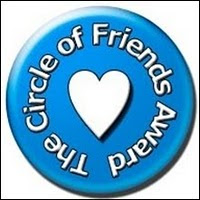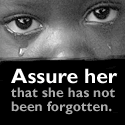I always love reading a novel from an author whose work I had not previously read – and being knocked out in the process! Such is the case with ‘Amy Inspired
Here is the synopsis of this novel:
With rejection letters piling up, she could use just a little INSPIRATION… Amy Gallagher, aspiring writer, has an unabashed obsession with words. She gave up a steady, albeit unexciting, job to pursue a life of writing. However, two years and one master’s degree later, she finds herself almost exactly right back where she started. Discouraged by the growing pile of rejections from publishers and afraid that she has settled, Amy knows something has to change.
Then she meets the mysterious, attractive, and unavailable Eli. Amy finds herself struggling to walk the fine line between friend and something more with Eli, even as she tries to cope with the feeling that her friends and family are moving on without her. When the unexpected begins pouring in, Amy doubts the love and fulfillment she seeks will ever come her way. Forced to take a close look at who she has become, the state of her faith, and her aspirations for her life, she must make a choice: play it safe yet again or finally find the courage to follow her dreams.
Here is the biography of this author:
After creating a master’s in Creative Writing and working as a visiting instructor at Miami University in Ohio, Bethany Pierce now lives with her husband in Charlottesville, Virginia, where she is a member of the McGuffey Art Center and continues to write. Her first book, Feeling for Bones, was one of Publishers Weekly’s Best Books of 2007.
Here is Bethany talking about her first book, ‘Feeling for Bones .’ She alludes to this book in this video:
.’ She alludes to this book in this video:
That book sounds fascinating as well. I went through a period of anorexia in my college years; it is a very interesting mindset.
I loved the Prologue of 'Amy Inspired ':
':
“Find something you love to do,” my father told me, “and you’ll never work a day in your life.” Optimistic advice from a man who spent fifteen years selling insurance, a job he detested for fourteen. Eventually, my father did follow his passions, out of insurance and into the arms of a local attorney who loved him, presumably better than my mother, and made six figures.
If my parents had anything in common, it was the shared belief that life was good. When Anne Frank’s Diary of a Young Girl left me in a rage, my mother recommended that I read something nice; it was best not to think about things I couldn’t change. She believed in marriage, despite her divorce. She had no pain in childbirth.
In our home, glasses were half full; when God shuts doors He opened windows; and you could be anything you wanted to be when you grew up, even – and especially – the president of the United States. (p. 7)
The first chapter gives us an early glimpse into the optimism and quirky worldview of the main character, Amy Gallagher; the book is written from her point of view:
That he showed up to our first date wearing a pink-collared shirt and that he looked prettier in pink than I did should have told me everything I needed to know about Adam Palmer had I been paying attention.
“I just think if you consider all the factors at play here, it seems time we consider where exactly we’re going with the relationship,” he said now, less than three months later.
Outside the window to our left, students spilled onto campus, flooding the sidewalks. It was the turn of the hour: Adam had a class to teach in ten minutes. I realize he’d timed our break-up to allow himself quick escape. (p. 13)
Amy has a very interesting roommate named Zoë. Here is Amy talking about her good friend:
Zoë was my saving grace. We met while working the Thanksgiving food pantry at a small local church. It was my first semester of teaching. I’d been a more or less faithful member of Copenhagen [Ohio] Baptist since arriving in town, drawn to the little church by its charismatic leader, Pastor Maddock, a minister whose dual degrees in theology and literature colored his sermons with a writer’s love of metaphor and subtlety.
Zoë had lived in Copenhagen longer than I had, but had been systematically trying out every church within a fifty-mile radius since arriving. With her petite figure and colorful wardrobe, she could have passed for a high school student; I was shocked to find out that she had just graduated from the university. The church secretary used our shared love of writing to introduce us. Within ten minutes we were fighting about C.S. Lewis.
“Overrated,” she claimed.
“You’re kidding,” I said. “He takes spiritual concepts hackneyed out of all its originality and makes them new again. You have to at least give him credit as a storyteller – what about the Narnia books?”
“Overrated,” she repeated. “You ask any Christian writer who their favorite author is, and I’ll bet they’ll say C.S. Lewis. He’ll be at least in the top five.”
“He’s popular because he’s good,” I countered. (pp. 29-30)
And on it went – an inauspicious beginning to their friendship!
Amy brought her worldview to her teaching of her Creative Writing class:
We discussed the many audiences we saw in our minds when we wrote: editors in offices in great cities, professors with their red pens, peer reviewers, family, friends.
Sometimes these people can hinder our voice,” I said. “How many times when you are writing do you hold back for fear of what your mom would say if she read it? Or for fear of what a professor will say about your style? In today’s reading, Lamott points out that you have to free your mind from the burden of that critical audience. To write what it is you want to write about.”
Lillian, Finnelley, a varsity cheerleader whom I suspected of taking the class for an easy A, raised her hand. “Who’s our audience then?”
“Yourself. God. Someone kind and forgiving.” (p. 46)
As I am writing a lot more than I used to these days, I could really relate to that section of the book.
Zoë brought in a friend to share their apartment. Here is Amy’s description of Eli:
Arguably, Eli is attractive, with a face that belonged to some younger than his thirty-two. Dressed more conservatively, his long hair trimmed and pulled back, you might notice the defined structure of his cheekbones; in the right circles, his narrow face and his deep-set eyes might be considered vogue, even beautiful. But you didn’t immediately notice beauty. Too many other superficialities demanded your attention. His clothes were secondhand, well-matched but often stained with paint or plaster. He wore heavy jewelry, silver rings on his fingers and frayed hemp on his wrists and neck. Most distinct of all was the tattoo, a Celtic circular pattern that wound from shoulder to just below his elbow in dark green ink. (p. 58)
Eli ended up staying longer than Amy had anticipated. Amy describes his artistic bent and his popularity:
He had a creative energy that would have been medicated with Ritalin in someone half his age. His hands trembled when he drew, from excitement or from caffeine. He drew on his jeans or his hands if he couldn’t find paper. He didn’t eat at home if he could find someone who would go out, and just about anyone would do; He handed out his friendship indiscriminately.
The Volkswagen was partly to blame for his notoriety. The van looked innocent and playful crowded between the bullying SUVs the student favored that year, a clown car infiltrating military camp. It bounced through Copenhagen’s narrow old streets like Mr. Rogers’ cheerful trolley. People honked and waved.
His new and many friendships, however, were a direct result of his job at the coffee shop. He hosted poetry night, introducing each artist with one-minute bios he’d drafted from brief interviews conducted beforehand. The menu marker board featured quirky Morretti illustrations. Before Jimmy, The Brewery’s owner, had created Eli’s position, assigning him to shifts that did not need a third barista, Eli was essentially paid to sit at The Brewery six hours a day hopped up on espresso and practicing Foam Art; the delicate making of patterns in people’s lattes. He could make a branch of delicate leaves, a wobbly star, and – most endearing with the women – a floating heart. (p. 115)
Eli and Amy had a discussion about the artistry behind writing:
…”There’s no magic to books, Amy!”
“But there is! I love the idea that someone else could for a moment live in a world I created, make it their own. I might have a mental picture of a character, but everyone else who reads the book will see that character a little different. If I invent and then publish an Annie Smith, I’ve created a hundred or a thousand Amy Smiths, each different from the others imagined, but all of them as real as a real person to the reader who falls in love with the story. How many people talk about Mr. Darcy or Scout or Jo March as real people they’ve known? And isn’t that magic? To make something real out of thin air?” (p. 184)
It is magic indeed!
Later on, they talked about his craft; Amy had an unexpected revelation. Amy begins the conversation here:
“What’s it like in your head when you’re drawing? I’ve always wanted to
know what it’s like to be able to draw.”
“I don’t know. I don’t really think about it. I just make something and keep making it until a pattern or a figure or something emerges. And it becomes pleasing to me.”
“You love it, don’t you?”
“I don’t work when it’s not enjoyable.”
This struck me as somehow profound. “Can you call it work then?”
A smile tugged at the corner of his lips.
I said, “I doubt there are very many things I hate more than writing.”
“Then why do you do it?”
I chewed on the end of my pen. “For that one moment of inspiration,” I decided. (p. 192)
Amy has a strong faith; she is inspired by her pastor, Pastor Maddock. One Sunday, he preached on one of my favorite books in the Bible, Ecclesiastes:
He braced his hands against either side of the pulpit: “That aching in your body that feels almost like a physical hurt. God has made it so. That passion to be known and loved not as a name or by an accomplishment or by a mistake – that desire to be known as you, yourself, in all your individual thoughts and dreams and worries and hopes and foibles – God has made it so. That need to wrap yourself around Time, to defeat death, to outlive this life – God has made it so. He has made it so that you will find recognition in Him.” (p. 233)
Amy had a spiritually deep conversation with one of her students, Ashley:
“This will seem off-topic, but I’ve always been fascinated by science – anatomy, quantum physics, space and time theory. I don’t understand these things, but the mystery is a part of what attracts me to them.
“That the world I live in now is complex beyond my understanding only encourages me to believe that there are wild possibilities in creation beyond even the things of this dimension of time and space. If this universe has alternate dimensions outside of our understanding, isn’t it possible that we might exist in a life beyond this one, in another kind of dimension that is fuller and more alive than the one we know?” (p. 250)
I loved the direction that the relationship between Amy and Eli took. I won’t divulge what happens, but I liked the way it was headed!
This book has some elements that may not appeal to all Christians. For instance, the female roommates allowed a male to move in with them. That will not sit well with all of the readers of this book. On the other hand, I think these various aspects will open up the book to a wider readership, which will in turn be exposed to the truths of Christ and the Scriptures. I can live with the imperfections in order to get the Gospel to people who may not otherwise be exposed.
This book kept calling my name and drawing me back when I was away from it; I wanted to know what was going to happen to these wonderfully multi-faceted characters. I think Bethany is a terrific writer, and I look forward to seeing what else she has in store. As usual, I also would like to see if there will be more to the story of Amy and Eli in the future; I look forward to it with great anticipation!
You can order this book here .
.
This book was published by Bethany House Publishers and provided by Wynn-Wynn Media for review purposes.




























.jpg)







No comments:
Post a Comment